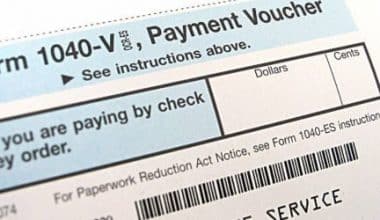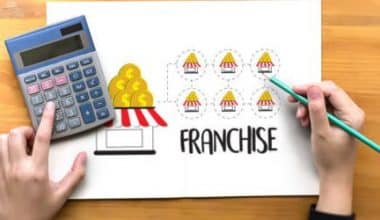Switching costs are the costs incurred by a customer when purchasing goods or services from a new company. If a company’s switching costs are high, it may be possible to improve customer retention rates. Customers are less likely to switch to a competitor’s brand if they know how to identify switching costs. We’ll go over the definition of switching costs, an example, the various types, and why they’re important in this article.
Definition of “Switching costs”
Switching costs are the costs incurred by a customer when purchasing goods or services from a new company. When a customer or a business switches brands, suppliers, or products, switching costs are incurred. Customers’ purchasing decisions are influenced by switching costs. Customers may make repeat purchases from the same company if switching costs are high, or they may choose a competitor if switching costs are low. Because of fees and different prices for products or services, consumers may incur switching costs when purchasing from a different store or company.
Switching costs put roadblocks in the way of customers who want to switch to a competitor. If a customer wants to cancel a food subscription service and switch to a new one, the company may require the customer to wait 30 days before processing the cancellation, fill out extensive paperwork, and pay an exit fee to keep them from leaving.
Here are some common switching costs that consumers experience:
- Monetary Cost: The most common cost is a monetary cost, which refers to the cost difference that occurs when switching brands. For example, if a customer saves $500 by switching cell phone providers, that is a significant monetary saving.
- Time costs: If a business requires a two-month wait to close an account, it may have a favorable time cost.
- Psychological costs: This is the difference in how a brand, product, or supplier makes the consumer feel. For example, if a consumer switched phone plans lately and they feel that their prior phone supplier was similar to their new one, then they have a low psychological cost.
- Effort-based costs: This refers to the amount of effort an individual must give to switch costs. For example, if a consumer buys a new car that requires them to put more gas in it than their last car, the new car has a high effort-based cost.
Why are Switching Costs Important?
Switching costs are essential because they allow shops to sustain revenue and expand brand awareness. Because customers are less likely to leave or switch to a rival when switching costs are high, your sales may stay the same or grow. High switching costs may also indicate that your products or services are more unique than those of your competitors, increasing consumer interest in the firm and brand awareness.
Types of Switching Costs
There are two types of switching costs: low-cost and high-cost switching. The price difference is primarily determined by the ease of transfer and the availability of equivalent competing products.
Low Switching Cost
Companies with low switching costs generally offer products or services that are very easy to duplicate at comparable pricing by competitors. Consumers may readily find clothes discounts and compare prices by walking from one store to another; therefore apparel companies enjoy low switching costs. Consumers may now shop for clothes from the comfort of their own homes across many online platforms; thanks to the advent of Internet shops and speedy shipping.
High Switching Cost
Companies that manufacture distinctive products with few substitutes and need a large amount of effort to master their use benefit from high switching costs. Consider Intuit Inc. (INTU), which provides bookkeeping software to its numerous customers. Few people are willing to switch away from Intuit since learning to utilize its applications requires a lot of time, effort, and money.
Common Switching Costs
Companies can utilize a number of particular switching charges to dissuade customers from jumping ship and transferring to a competitor. The following are some of the most common:
- Convenience: A business may have multiple locations for its stores or products, making it convenient for customers to purchase its goods. Customers may choose to stay with the higher-cost product because it is more convenient; than a competitor’s cheaper product that is further away and difficult to reach.
- Emotional: Many organizations, for example, continue to do business with their current suppliers because the emotional cost of finding a new source, forming a new relationship, and getting to know new people is considerable. It’s similar to why someone might choose to stay in one job rather than leave for one that pays slightly more. Because the individual is familiar with their supervisor and coworkers, the emotional cost of switching may be prohibitive.
- Exit Fees: When you leave a company, you may be charged an exit fee. These charges are normally unnecessary, but they are tacked on at the end to keep a customer from leaving. These fees can be classified in whatever way a corporation wants, including administrative fees for canceling an account.
- Time-based: When switching from one brand to another takes a lengthy time, people are hesitant to do so. For example, if a person has to wait a long time on the phone to speak with someone about closing an account, and then has to fill out paperwork to terminate the account, they may decide that the time spent is not worth it.
An Example of Switching Costs
Company ABC intends to replace its car supplier. For its staff to commute, the organization needs 90 operable automobiles. The present vendor charges $20,000 per month, whereas a new vendor has quoted $18,000 per month. As a result, the company intends to switch vendors. The transaction has a number of switching fees.
The current vendor delivers well-maintained vehicles, which makes it convenient for employees. The company is currently unsure about the vehicles provided by the new vendor. As a result, there is a psychological cost.
A significant amount of work will be spent ensuring that the new vendor is adequately informed about the routes. This could take several days. The time cost is also a factor.
All drivers must be entered, and background checks must be completed. As a result, operational costs are involved. Adding all of the above costs together will result in a significant switching cost; which will ultimately be determined by the company’s willingness to bear the cost.
Strategies Employed by Companies
Let’s look at how businesses devise strategies to raise consumer switching costs in order to discourage them from switching brands, products, services, or suppliers. It is considered a competitive advantage for a corporation if it is able to compel consumers to suffer higher prices.
Consider the previous example of a person switching to a less expensive phone plan. If switching to a lower phone plan requires a significant amount of effort and time; the individual may not choose to switch phone plans to save $5.
Companies use a variety of strategies to increase consumers’ switching costs. Consider the following scenario:
- A hefty cancellation fee for service cancellations.
- Including a long or complicated cancellation procedure for service cancellations
- Requiring extensive paperwork in the event of a service cancellation
It’s worth noting, though, that while firms might impose large switching costs; competitors can assist consumers to avoid them by carrying a portion of those expenses. For example, a company may charge a large cancellation price for its services, but if the customer agrees to switch; a competitor may offer to cover the cancellation fee.
The QWERTY Keyboard is a good example.
The QWERTY keyboard layout is a good example of a product with high switching costs. According to studies, when compared to a DVORAK keyboard layout, the QWERTY keyboard layout may not be the most efficient (in terms of typing speed).
Consumers dislike the DVORAK keyboard layout because of the significant switching costs (in terms of time and effort required to learn a new keyboard layout) associated with converting from a QWERTY keyboard to a DVORAK keyboard.
How do Switching Costs Benefit Businesses?
Organizations may price their offerings fairly by understanding the switching cost of their products or services. Consider the case where a consumer is offered the best price for a new product or service but must pay a switching cost that is higher than the current price of the product or service they use.
A reasonable consumer would not switch to the new product in this situation and would remain loyal to the previous product or service. In this situation, the company supplying the old product or service can raise the price of its goods by a little bit while still maintaining customer loyalty.
How Can Switching Expenses Be Decreased?
Consider implementing a freemium model for your product to lower the cost of switching to it.
What Are the Hurdles and Switching Costs?
In the fields of marketing, strategic management, and microeconomics, switching costs and switching barriers are commonly used phrases. They could be characterized as the drawbacks or costs consumers believe they incur, as well as the financial and emotional costs associated with changing from one choice to another.
Why Is the Cost of Switching Calculated?
A marketing concept used to improve client retention is switching costs. Due to the difficulty of switching products or service providers when switching costs are high, they are employed in some industries to establish and sustain a competitive edge.
What Impact Do Switching Fees Have On Client Loyalty?
The relationship between trust and customer loyalty will be weaker in customers with high perceived switching costs than it will be in customers with low perceived switching costs.
Do Switching Expenses Reduce Market Competition?
Prices usually increase in proportion to switching costs when the investment motive has been removed because switching costs reduce market competition. The average transaction price in markets with forward-thinking enterprises is typically lower than the average price in markets with myopic competitors.
How Is the Price of Switching a Barrier to Entry?
High consumer switching costs act as entry barriers because new entrants have a hard time persuading potential customers to spend the extra money necessary to make a change or switch. Another name for an entry barrier is a competition barrier, entry barrier, or market entry barrier.
Conclusion
Everyone is a user, and with so many options on the market; consider how often we encounter scenarios with low or high switching costs. These costs play a significant role in determining the overall cost for every company. Analyzing these costs will assist a company in dealing with competition and increasing customer retention. As a result, the definition, example, and strategies for switching costs are now complete.
Switching Costs FAQs
When switching costs are high?
Individuals are less inclined to switch brands, products, services, or suppliers if the cost of switching is significant. Consumers perceive that the higher the cost, the less value they derive from moving to a different brand, product, service, or provider.
Who benefits from switching costs?
One of the seven business model mechanics you may employ to create superior company models is switching costs. Switching expenses let businesses save money on customer acquisition and rely on recurring revenue from customers. They can also shield you from your rivals.
How do you reduce switching costs?
Consider employing a freemium model for your product to minimize financial switching costs. Slack, for example, does an excellent job of weaning people onto paid programs. Slack is initially free for a limited number of users, allowing people to try it out without incurring any financial costs.
What is switching cost of supplier?
Switching cost is the cost suffered by a consumer when switching a service, product, or supplier. It includes not only monetary costs, but also psychological costs, time costs, and so on.






